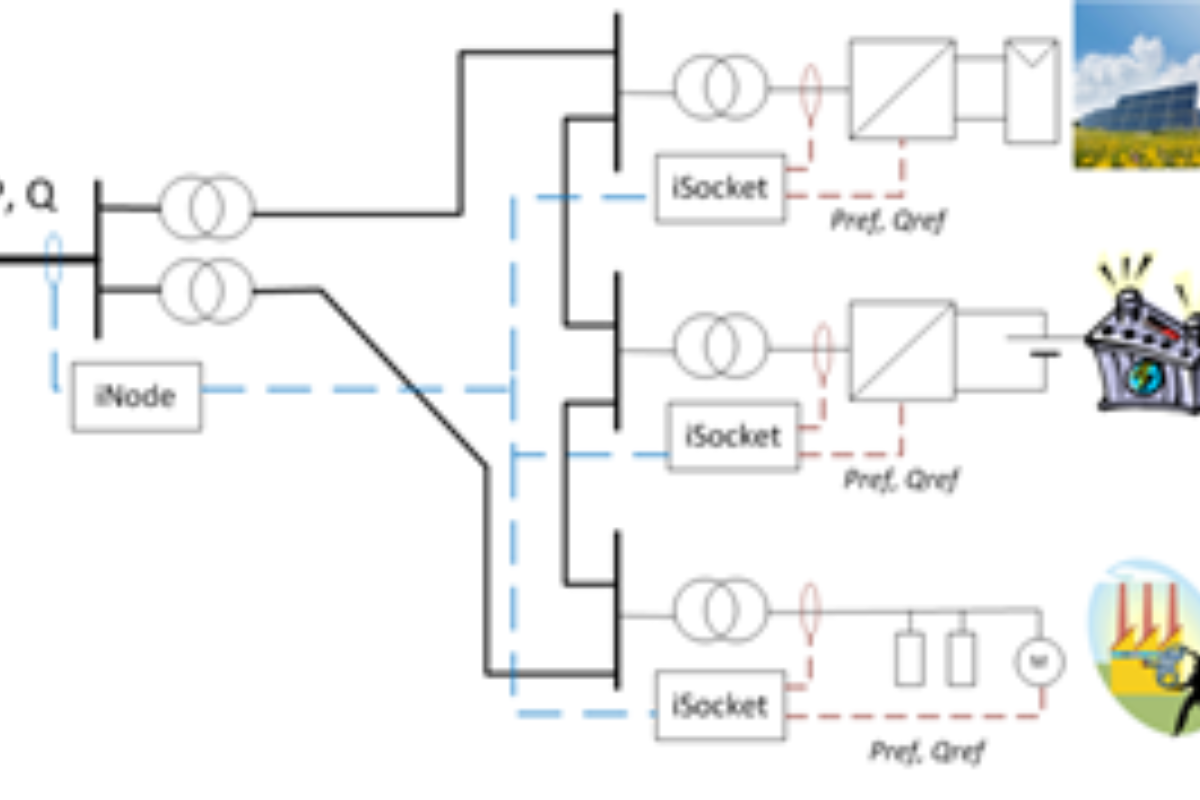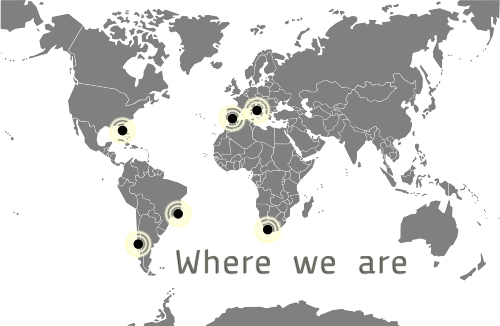Energy storage systems integration into PV power plants
Energy Storage Systems
Title block
New challenges are growing currently in the field of operation of electrical power system, which includes the increasing level of distributed generation from new energy sources, especially renewable sources. Energy storage will soon become a key element of smart grids, especially as more power generation from inherently intermittent sources such as solar and wind come online.

A smart grid can always be defined by three types of nodes: generation nodes, consumption nodes and a thrid kind, the Point of Interconnection (POI). Usually, micro-grid control is performed by managing the state variables of the Point of Interconnection. Depending on the application, these variables will be real and reactive power exchange, or voltage and frequency control, respectively. In all cases, a fourth kind of nodes must be used to allow a complete smart grid management: the Energy Storage System node.
The use of energy storage systems (ESS) in PV power plants allow an optimal performance in all PV systems applications. For power plants oriented to the self-consumption, ESS allows minimize the exchange with the grid, increasing the percentage of energy used from photovoltaic generation. Depending on local regulation, this self-consumption increase can give extra profits in the power plant operation. In this case, the ESS allows to use the extra energy not used during the day. Battery discharge will depend on the customer consumption, so high capacity batteries are needed; optimal sizing would be close to the total plant energy production during one regular day. However, a big dicharge energy is not necessary.
Weak grids
In the case of power plants oriented to sale the energy to the grid, ESS allows an active management of the energy production, giving the capability to inject energy into the grid at the highest energy prize too. In this case, battery discharge is done in a relatively short time, so the discharge power must be about the plant rated power.
Other case, more common each day, is the necessity to meet the connection requirements for generation plants to weak grids like the island. Usually, these requirements force the power plant to participate in the grid frequency and voltage regulation. Frequency regulation must be accomplished using storage systems, since the power source is not available at all time. Batteries in this case must be sized to have the power required by the droop law applicable, usually defined by the system operator.
Regarding voltage regulation, it is performed by reactive power injection or consumption. Reactive power provision for voltage control purpose can be provided by PV inverters having extended VA rating. Another way is to give priority to Q generation instead of P, but this reduces the real power.
The last case is the isolated systems. In this case, voltage and frequency must be generated and controlled by smart grid codes. ESS is an imperative requirement in this kind of installations. In stable operation, it has to smooth the differences between power production and loads, so the storage system must be fast and be able to support a lot of little charge/discharge cycles.
GPTech double ESS solution
Additionally, if the generation stops it has to support all the load power until the load disconnects in a controlled way. The same issue appears when the generation starts. The system has to create the grid where the loads are going to connect, and support them until the generation is ready to inject energy into the grid.
The ES requirements for those applications include: fast reaction time, high efficiency, easiness of maintenance and possibility to indepently sizing power and energy of the storage system. According to them, to its current technological state and fast development trends, nowadays, the best option for the ESS is electrical storage in batteries. However, the main problem of the batteris is its limited lifetime. This lifetime depends on the number of cycles of charge and discharge and on their depth.
To solve this issue, GPTech suggests a double dynamic ESS based in batteries and capacitors working together (scheme is shown in Figure 2). Short charge and discharge cycles, with characteristic times about minutes, will be supplied by capacitors, with a much higher lifetime, while batteries will supply long time cycles in the order of hours. On this time, the lifetime of the batteries can increaes to the double.

Nowadays and in the near future batteries and the associate power electronics control are considered as the most important issue for PV integration and as the technology which will provide PV plants with capability for grid application



